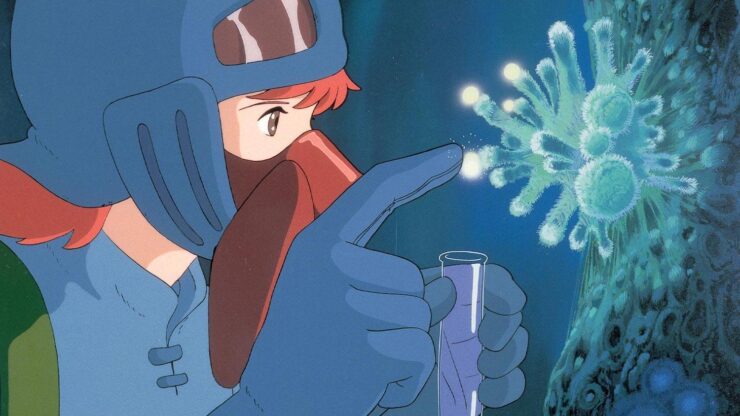As far as can currently be determined, we are the only technological civilization in this universe…at least the only one of which we are aware. There are many explanations as to why this would be so. The explanation that sparks the plot in the following five works is that of a great filter—some reason that any life that emerges elsewhere will fall prey to some kind of bottleneck and stagnate or die before it reveals itself to our instruments. This essay focuses on one proposed bottleneck: intelligent tool-using. Put simply, bright tool-users are better at creative disruption than they are at foreseeing and surviving the consequences.
This explanation gives humanity an excuse for our possible self-extinction (whether due to climate change, nuclear war, death by microplastics, etc.). Calamitous misjudgment isn’t a uniquely human flaw! It’s inherent to tool-using intelligence itself. At worst, we’re just a demonstration case.
Toolmaker Koan by John C. McLoughlin (1987)
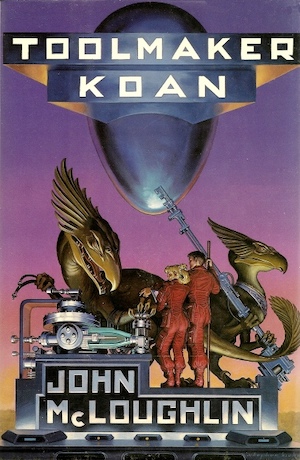
On discovering what appears to be an alien artifact at the edge of the Solar System, the United People’s Democratic Republics of Africa and Eurasia hastily dispatches an expedition. Not to be outdone, the Greater Columbian Alliance launches its own spacecraft towards the artifact. Both ships are heavily armed. Determined to prevent their enemy from gaining a monopoly on alien technology, both crafts attempt surprise attacks. This leaves both terrestrial ships irreparably damaged and the surviving crews dying of radiation.
The novel is prevented from being a depressing novella thanks to the intervention of an alien artificial intelligence that the novel calls Charon. Billions of years old, Charon has ample proof that toolmaking species are their own worst enemies, invariably causing their own extinction with misapplied ingenuity. Charon has a bold plan to assist humanity to avoid otherwise inevitable doom. It’s too bad for humanity that the unfortunate AI is quite mad and that its plan cannot possibly work as envisioned.
Normally I tackle theme books in order of publication. In this case, McLoughlin’s novel is what got me thinking about this particular solution to the Fermi Paradox. While the novel has its flaws (stodgy writing, a love of infodumps that would astonish Poul Anderson), there are some genuinely original ideas in the book that reward consideration. Pity the novel is very much out of print.
“Adam and No Eve” by Alfred Bester (1941)
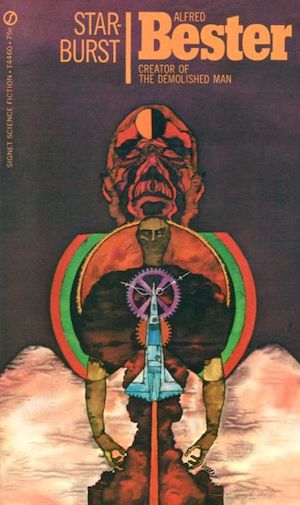
Determined to reach the Moon, a bold inventor deploys his breakthrough discovery, a catalyst that releases energy from the atomic conversion of iron. This will power his rocket!
Now a considerable fraction of the Earth’s mass is iron; if even a drop of catalyst were to escape from the rocket, apocalypse would result. The determined explorer assures nay-sayers that he has taken every reasonable precaution. The launch goes as planned. Almost.
All life on Earth having perished in the ensuing cataclysm, only life off Earth—specifically the explorer and his unfortunate dog—survives. One man alone cannot repopulate a planet with more of his own kind. He might, however, provide the seeds from which a new biosphere could arise.
In his defense, our hero was an ingenious fool. His invention belongs to a class of technology I’ve mentioned before, power sources that should under no circumstances be used near a planet. See also Steve Gallaci’s Albedo, whose total conversion power system could potentially convert entire planets to energy, which would be bad.
Aniara by Harry Martinson, translated by Stephen Klass & Leif Sjoberg (1956)
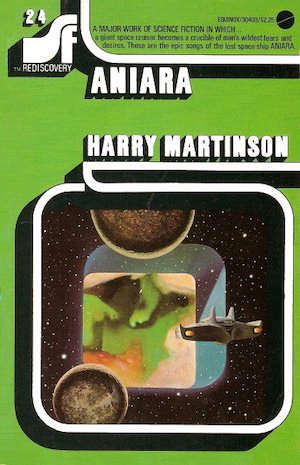
As depicted in Martinson’s 103 cantos, the tale begins with a refugee ship spacecraft, fleeing radioactive Earth for Mars, that is inadvertently diverted into interstellar space. An alarming development but hope is not dead. Not only are the craft’s systems able to sustain life indefinitely, the Aniara’s nearly omniscient guiding intelligence, Mima, is in constant contact with human civilization.
Humanity learned its lesson from World Wars One through Thirty-Two. What it learned was how to stage wars of increasing destructiveness…until no human remains to fight them. The spectacle is too much for poor Mima, who falls silent. It remains for its passengers to recapitulate human folly on a much smaller but equally doomed scale.
Yes, it is a bit odd that two unrelated works would feature kindly artificial intelligences driven mad by their creators needlessly self-destructing. Proximity to humans is often challenging for benevolent AIs; take for example 2001’s HAL, who only wanted to carry out all of its directives. Aniara stands out because it’s a long poem, and because it was written by a Nobel Laureate.
Sea Siege by Andre Norton (1957)
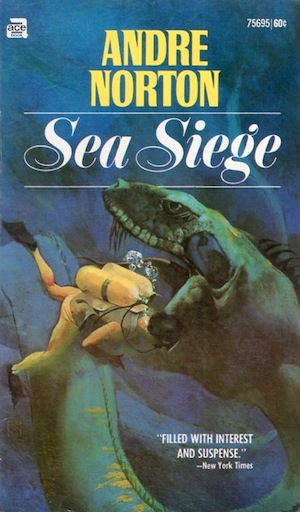
Griffith Gunston, son of prominent naturalist Dr. Ramsay Gunston, accompanies his dad to the small island of San Isidore, there to investigate the Red Plague currently killing fish. Locals blame sea monsters. This would be laughable were it not correct, as the naturalist soon discovers.
While this research is ongoing, the Cold War goes very, very hot. Most of humanity dies; only a few outliers, like San Isidore, survive. It’s too bad for the humans on San Isidore Island that the new-found intelligent octopuses are actively hostile to their land-dwelling rivals.
On first reading this book, and on re-reading it, I’ve wondered if World War Three was unintentionally provoked by octopus raids on ports. Norton leaves that possibility open.
Requires a “1950s treatment of Islanders has not aged well” warning, although this book isn’t quite as egregious as Norton’s Voodoo Planet.
Nausicaä of the Valley of the Wind by Hayao Miyazaki (1982)
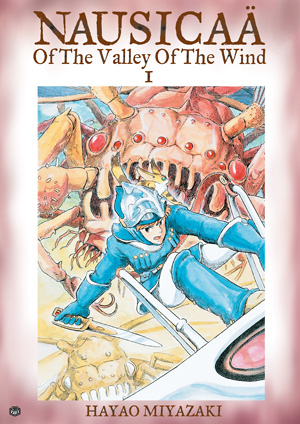
A thousand years after the Seven Days of Fire ended mechanized civilization, the Sea of Corruption covers most of the land. Implacably hostile to human life, the Sea of Corruption relegates the few surviving human nations to small refugia along the edges of the Sea. Plucky heroine Nausicaa’s native Valley of the Wind is one such refuge, protected by winds and human vigilance from the spores of the Sea.
Humanity is much reduced but just as greedy. When the Torumekians attack the Doroks, the Doroks respond with weaponized Sea of Corruption spores. Success! The Torumekians are no longer the primary threat facing a rapidly dwindling number of Doroks. Invasion foiled! All it took to prevent it was triggering an apocalyptic disaster.
Nausicaä is odd in that individual humans (like Nausicaä) are noble, brave, and likable, but the species to which they belong is irredeemably corrupt. As the increasingly unhappy protagonist discovers, The Sea of Corruption is a misnomer. It is not corruption at all but rather the means by which nature purifies itself. Too bad for humanity that humans are deemed contamination.
***
Humans (and intelligence in general) being deemed by many authors a regrettable development, there are many works I could have mentioned (and may have in previous essays) but did not. Notable examples of tool use as a self-solving problem may be mentioned in comments, which are as ever below.
In the words of fanfiction author Musty181, four-time Hugo finalist, prolific book reviewer, and perennial Darwin Award nominee James Davis Nicoll “looks like a default mii with glasses.” His work has appeared in Interzone, Publishers Weekly and Romantic Times as well as on his own websites, James Nicoll Reviews (where he is assisted by editor Karen Lofstrom and web person Adrienne L. Travis) and the 2021, 2022, and 2023 Aurora Award finalist Young People Read Old SFF (where he is assisted by web person Adrienne L. Travis). His Patreon can be found here.










